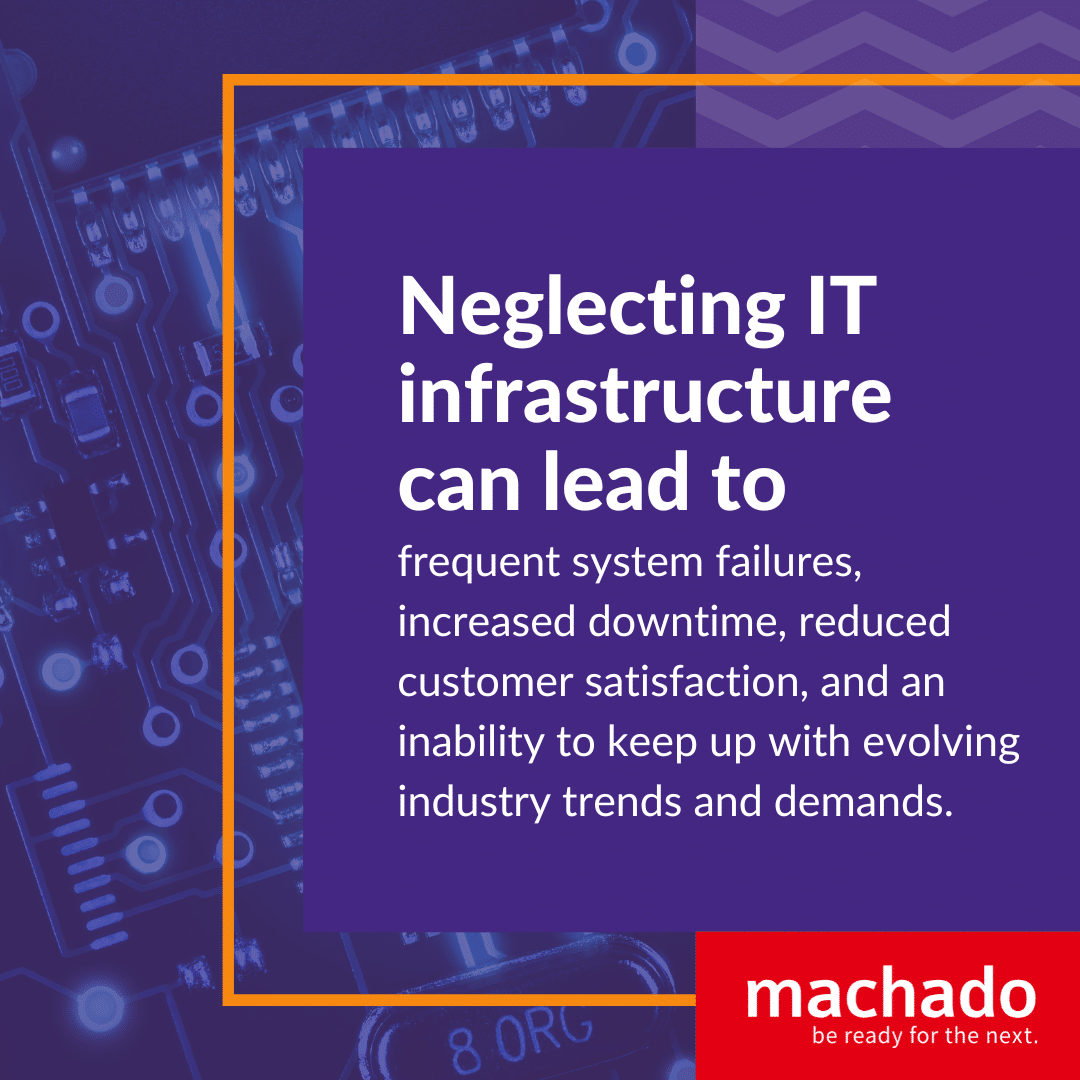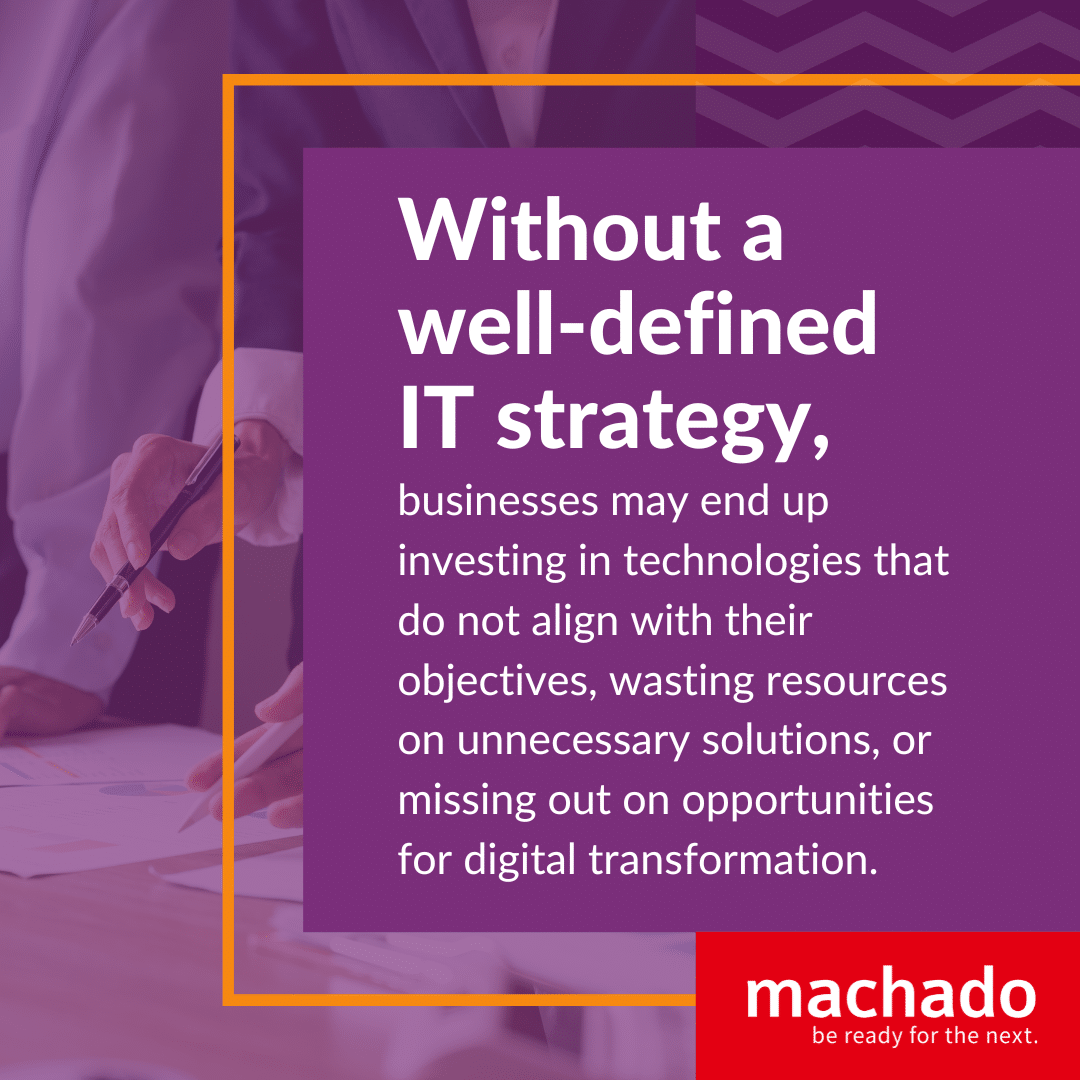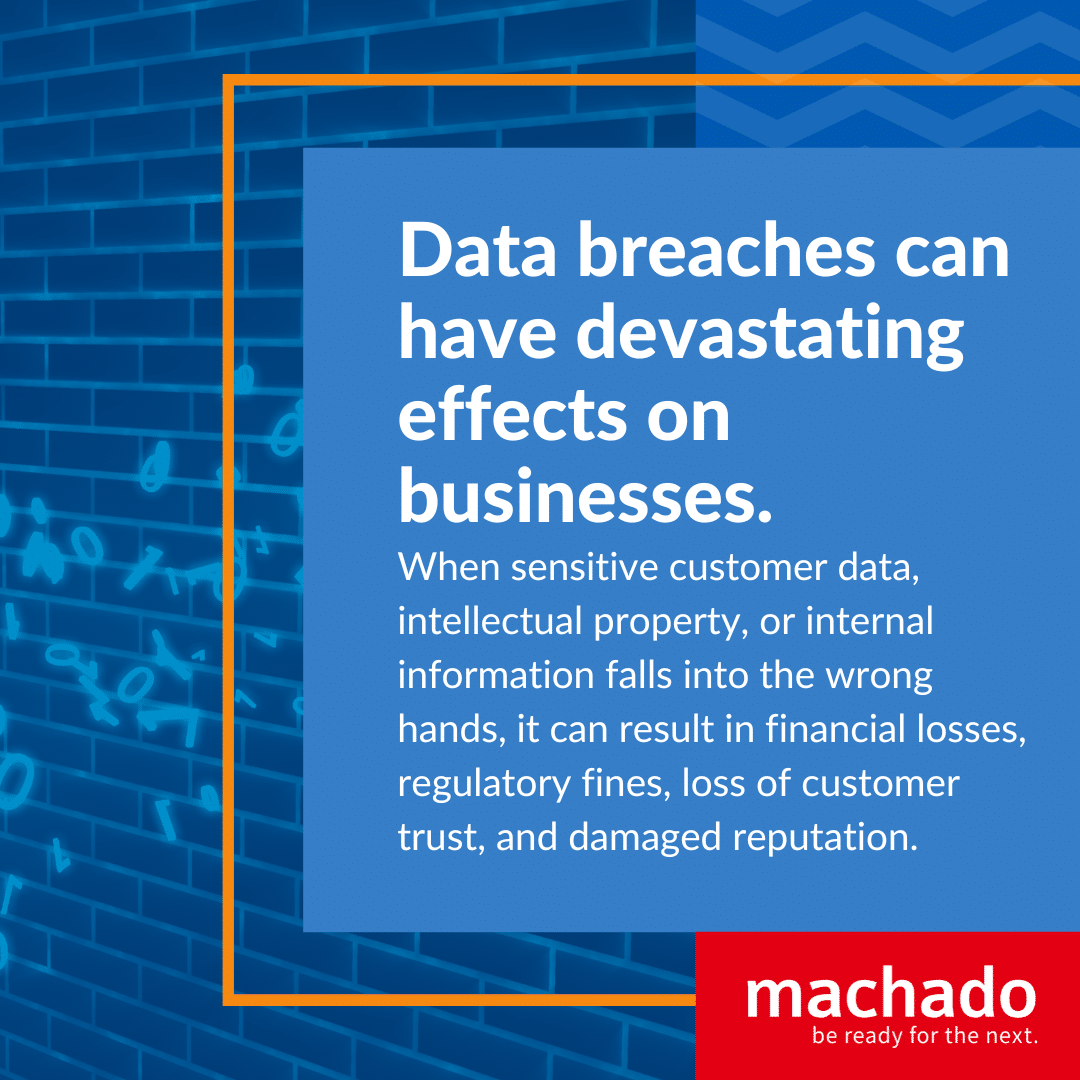When it comes to IT, businesses often make several common mistakes that can have a negative impact on their operations and overall success. In this post, we list the three top things businesses get wrong about IT that can hurt their business.
Underestimating the Importance of Cybersecurity
One of the biggest mistakes businesses make is underestimating the importance of cybersecurity. Many organizations believe that they are too small or not significant enough to be targeted by cyber threats.
However, the reality is that cyber attacks can happen to any business, regardless of size or industry. Failing to prioritize cybersecurity measures such as robust firewalls, regular software updates, strong passwords, and employee training can leave businesses vulnerable to data breaches, financial losses, reputational damage, and legal liabilities.
Neglecting IT Infrastructure Maintenance and Upgrades
Another common mistake is neglecting the maintenance and upgrades of IT infrastructure. Some businesses may view IT infrastructure as a one-time investment and fail to allocate resources for regular maintenance and upgrades.
Over time, outdated hardware, software, and networking equipment can become a bottleneck, hindering productivity, scalability, and overall business efficiency. Neglecting IT infrastructure can lead to frequent system failures, increased downtime, reduced customer satisfaction, and an inability to keep up with evolving industry trends and demands.
These can then lead to financial losses, security breaches, and limitations in adapting to technological advancements.
Proactive maintenance and timely upgrades can help businesses optimize performance, enhance security, and keep pace with evolving industry standards and customer expectations.
Lack of IT Strategy and Alignment with Business Goals
Many businesses fail to develop a clear IT strategy and align it with their overall business goals. IT is not just a support function; it plays a critical role in driving innovation, streamlining operations, and achieving competitive advantages. Without a well-defined IT strategy, businesses may end up investing in technologies that do not align with their objectives, wasting resources on unnecessary solutions, or missing out on opportunities for digital transformation. A lack of strategic IT planning can hinder business growth, limit agility, and result in inefficient use of resources.
To avoid these common pitfalls, businesses should prioritize cybersecurity, regularly maintain and upgrade their IT infrastructure, and develop a clear IT strategy aligned with their business goals. By doing so, they can leverage technology effectively, protect their data and systems, and stay ahead in today’s digital landscape.
Underestimating the Importance of Cybersecurity: Why It’s a Big Deal
Underestimating the importance of cybersecurity can have severe consequences for businesses. Cyber attacks are on the rise, and organizations of all sizes and industries are increasingly becoming targets.
Failing to prioritize cybersecurity can leave businesses vulnerable to various threats, including data breaches, financial losses, reputational damage, legal liabilities, and operational disruptions.
Here’s why it’s such a big deal:
Data Breaches and Loss of Sensitive Information
Data breaches can have devastating effects on businesses. When sensitive customer data, intellectual property, or internal information falls into the wrong hands, it can result in financial losses, regulatory fines, loss of customer trust, and damaged reputation. Recovering from a data breach can be time-consuming, expensive, and may even lead to business closure.
Financial Impact
Cyber attacks can cause significant financial damage. The costs associated with incident response, investigation, legal fees, remediation, and potential lawsuits can quickly add up. Additionally, businesses may face regulatory penalties and fines if they fail to comply with data protection regulations such as the General Data Protection Regulation (GDPR) or the California Consumer Privacy Act (CCPA).
Reputational Damage and Loss of Customer Trust
A cybersecurity incident can seriously harm a business’s reputation. News of a data breach or security incident spreads quickly, and customers may lose confidence in the organization’s ability to protect their sensitive information. This loss of trust can result in customer attrition, decreased sales, and difficulty acquiring new customers.
Operational Disruptions and Downtime
A successful cyber attack can lead to operational disruptions and downtime, impacting productivity and revenue. Ransomware attacks, for example, can encrypt critical business data, rendering it inaccessible until a ransom is paid. This can bring business operations to a standstill and result in financial losses due to missed opportunities or delayed customer deliverables.
Actionable Best Practices for Cybersecurity
To strengthen your cybersecurity posture and mitigate the risks associated with underestimating its importance, here are some actionable best practices you can start implementing today:
Implement Strong Access Controls
Control access to your systems, networks, and sensitive data by enforcing strong passwords, multi-factor authentication, and least privilege principles. Regularly review and update access privileges based on employees’ roles and responsibilities.
Regularly Update Software and Patch Vulnerabilities
Keep your software, operating systems, and applications up to date with the latest security patches. Regularly apply updates to address known vulnerabilities that can be exploited by attackers.
Educate and Train Employees
Provide comprehensive cybersecurity awareness training to all employees. Educate them on common threats, such as phishing emails, social engineering, and the importance of secure password management. Encourage them to report any suspicious activities promptly.
Implement Firewall and Antivirus Solutions
Deploy and maintain firewalls and up-to-date antivirus software to protect your networks and systems from unauthorized access and malware. Regularly update security software to ensure it can detect the latest threats.
Secure Remote Access
If employees work remotely or access your systems outside the office, ensure that remote access mechanisms, such as virtual private networks (VPNs), are properly secured with strong encryption and authentication protocols.
Regularly Back Up Your Data
Implement a robust data backup strategy to ensure you have offline copies of your critical data. Regularly test your backups to verify their integrity and ensure they can be successfully restored in the event of data loss or a ransomware attack.
Conduct Vulnerability Assessments and Penetration Testing
Regularly assess your systems and networks for vulnerabilities through internal or third-party assessments. Conduct penetration testing to identify potential security weaknesses and address them proactively.
Establish an Incident Response Plan
Develop an incident response plan that outlines the steps to take in the event of a cybersecurity incident. This plan should include roles and responsibilities, communication protocols, and recovery procedures.
Remember, cybersecurity is an ongoing process that requires continuous effort and attention. By implementing these best practices and regularly reviewing and updating your security measures, you can enhance your organization’s cybersecurity posture and better protect your business, data, and customers from evolving cyber threats.
Neglecting IT Infrastructure Maintenance and Upgrades: Why It’s a Big Deal
Neglecting the maintenance and upgrades of IT infrastructure can have significant repercussions for businesses. Technology is constantly evolving, and outdated infrastructure can hinder productivity, efficiency, and competitiveness.
Here’s why neglecting IT infrastructure maintenance and upgrades is a big deal:
Reduced Performance and Downtime
Outdated hardware, software, and networking equipment may not be able to handle the increasing demands of modern business operations. This can lead to slow performance, frequent system crashes, and prolonged downtime. Employees may experience frustration and decreased productivity, impacting overall business efficiency.
Security Vulnerabilities
Neglected IT infrastructure often lacks essential security updates and patches, making it more vulnerable to cyber attacks. Outdated software and firmware may have known vulnerabilities that attackers can exploit to gain unauthorized access to systems or data. Neglecting infrastructure upgrades can leave critical systems and sensitive information at risk.
Incompatibility with Modern Technology
As technology advances, new software applications and solutions may require more powerful hardware or specific system configurations. Neglecting IT infrastructure upgrades can result in compatibility issues, limiting the organization’s ability to adopt new technologies and leverage innovations that can drive growth and competitiveness.
Limited Scalability
Outdated infrastructure may not have the capacity to scale or support the growing needs of the business. As the organization expands or experiences increased workloads, outdated infrastructure may struggle to handle the demands, leading to performance bottlenecks and limitations on growth opportunities.
Actionable Best Practices for IT Infrastructure Maintenance and Upgrades
To avoid the pitfalls of neglecting IT infrastructure maintenance and upgrades, consider implementing the following actionable best practices:
Regular System Updates and Patch Management
Establish a process for regular updates and patches to keep your systems and software up to date. This includes operating systems, applications, security software, and firmware. Regularly review vendor updates and security bulletins to address vulnerabilities promptly.
Hardware Refresh Cycles
Develop a hardware refresh strategy to replace outdated or end-of-life equipment within a defined timeframe. This ensures that your infrastructure remains capable of meeting the organization’s evolving needs and taking advantage of the latest advancements in technology.
Performance Monitoring and Optimization
Implement monitoring tools to track the performance of your IT infrastructure. Regularly assess system performance, identify bottlenecks, and optimize configurations to ensure optimal efficiency and responsiveness.
Network Security Assessments
Conduct regular network security assessments to identify vulnerabilities and weaknesses in your infrastructure. This includes reviewing firewall configurations, network segmentation, access controls, and encryption protocols.
Capacity Planning and Scalability
Monitor resource utilization to identify potential capacity constraints. Conduct capacity planning exercises to assess future needs and ensure that your infrastructure can scale to accommodate growth. This may involve adding additional storage, upgrading network bandwidth, or expanding server capacities.
Virtualization and Cloud Migration
Explore virtualization and cloud computing options to improve infrastructure flexibility, scalability, and cost efficiency. Virtualization allows for better resource utilization and agility, while cloud solutions can offload infrastructure maintenance and provide scalable resources.
Engage with IT Support and Maintenance Services
Consider partnering with reliable IT support and maintenance services that can help manage your infrastructure and ensure regular maintenance, updates, and troubleshooting.
By prioritizing IT infrastructure maintenance and upgrades, businesses can enhance performance, strengthen security, enable scalability, and future-proof their technology investments. Regular assessment, monitoring, and proactive planning are key to maintaining a resilient and efficient IT infrastructure that supports business growth and success.
Lack of IT Strategy and Alignment with Business Goals: Why It’s a Big Deal
Having a clear IT strategy that aligns with business goals is crucial for leveraging technology effectively and driving organizational success. Without a well-defined IT strategy, businesses may miss out on opportunities for digital transformation, waste resources on unnecessary solutions, or struggle to adapt to evolving industry trends.
Here’s why a lack of IT strategy and alignment with business goals is a big deal:
Missed Innovation Opportunities
Technology plays a pivotal role in driving innovation and competitive advantage. Without a clear IT strategy, businesses may miss opportunities to leverage emerging technologies, such as artificial intelligence, cloud computing, or automation, to enhance products, services, or operational processes. This can result in a competitive disadvantage and hinder the organization’s ability to stay ahead in the market.
Inefficient Resource Allocation
Without strategic IT planning, businesses may invest in technology solutions that do not align with their objectives or address their specific challenges. This can lead to inefficient resource allocation, where valuable time, money, and effort are spent on IT initiatives that do not deliver meaningful business value or support key strategic priorities.
Lack of Agility and Adaptability
A well-defined IT strategy enables businesses to be agile and responsive to changing market conditions. It allows for the adoption of new technologies, the integration of systems, and the implementation of digital processes that facilitate faster decision-making and business agility. Without an aligned IT strategy, organizations may struggle to adapt to evolving customer demands, industry disruptions, or regulatory requirements.
Siloed Technology Implementations
Without strategic alignment, different departments or business units may independently adopt technologies that do not integrate well with each other. This can result in data silos, disjointed processes, and inefficient collaboration across the organization. A lack of IT strategy and alignment can hinder cross-functional communication and coordination, negatively impacting productivity and hindering growth.
Actionable Best Practices for IT Strategy and Alignment
To address the challenges associated with a lack of IT strategy and alignment with business goals, consider implementing the following actionable best practices:
Define Clear Objectives
Clearly define your business objectives and identify how technology can support and enable those objectives. Engage stakeholders from different departments to ensure their perspectives and needs are considered in shaping the IT strategy.
Conduct IT Needs Assessment
Assess your organization’s IT needs, including current systems, infrastructure, and processes. Identify areas where technology can drive efficiency, improve customer experience, or provide a competitive advantage. This assessment will inform the development of your IT strategy.
Develop a Roadmap
Create a roadmap that outlines the key initiatives and projects required to achieve your IT goals. Prioritize initiatives based on their alignment with business objectives, potential impact, and feasibility. Define timelines, allocate resources, and set milestones to track progress.
Foster Collaboration and Communication
Establish cross-functional teams or committees to facilitate collaboration between IT and other business units. Encourage open communication, knowledge sharing, and regular feedback to ensure that IT initiatives align with the needs and expectations of different stakeholders.
Regularly Evaluate and Update
Continuously evaluate the effectiveness of your IT strategy and adjust it as needed. Regularly review industry trends, customer preferences, and emerging technologies to ensure your strategy remains relevant and aligned with the evolving business landscape.
Seek External Expertise
Consider engaging external consultants or IT advisory services to provide insights and guidance in developing and aligning your IT strategy. External expertise—even co-managed IT—can offer valuable perspectives, industry best practices, and help bridge any knowledge gaps.
By developing a well-defined IT strategy and aligning it with your business goals, you can optimize technology investments, drive innovation, enhance agility, and position your organization for long-term success in the digital age. Be sure to regularly review and adapt your strategy to ensure ongoing alignment with evolving business needs.
Download our free guide on staying protected from ransomware.Be Ready for the Next Cyberattack









